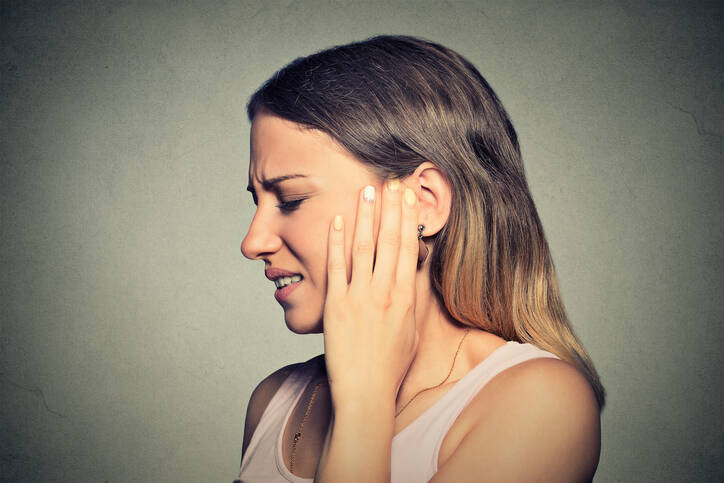Ear discharge - yellow, dark, bloody or purulent? Know the causes

It is important for the self-cleaning ability of the ear. It helps dirt to travel out of the ear. But if there is an increase in its production, inflammation may be the cause. Bloody discharge is common, for example, in severe head injuries.
Earwax is the secretion of the sebaceous glands and is used to clean the ear canal. These glands are located in the outer part of the ear canal.
The secretion also contains parts of peeled, worn skin, hairs, but also dust and impurities from the environment. Its coloration can be yellow, brown. Its consistency is mushy to stiff.

Discharge from the ear or even otorrhoea (otorea) is a symptom that is usually associated with inflammatory diseases and processes in the ear. It should certainly not be underestimated. Usually, in addition to the discharge itself, a person can observe other symptoms on himself:
- ear pain (for example, prickly)
- itching, scratching in the ear
- feeling of a full ear
- humming, rustling, whistling in the ear
- increased body temperature, even fever
- impaired hearing
- headache
- buzzing in the head
Especially in children, discharge from the ear, especially if accompanied by even minor traces of blood, should not be taken lightly. A visit to an ear doctor should always follow.
The ear is divided into three parts: the outer ear, which includes the outer part of the ear canal, the middle ear and the inner ear.
Hearing problems occur in a variety of situations. Ear discharge is usually a symptom of inflammatory problems, either in the outer ear or the middle ear.
Inflammation of the middle ear
Otitis media is the most common inflammation of the area. The discharge from the middle ear comes out when the eardrum is damaged, ruptured. Otitis media can also be purulent.
As associated symptoms also occur:
- hearing impairment
- dizziness
- swelling and redness
- pain in the ear

This disease is known professionally as otitis and is very common in children. It is also manifested by pain in the ear, increased body temperature and sometimes fever and a pricking sensation in the ear.
Sometimes the person also has a feeling of impaired hearing or lying down in the ears. There are cases when this inflammation is accompanied by humming and pain in the head.
Often otitis media is also associated with an upper respiratory tract infection. From here it spreads via the Eustachian tube.
It is a common complication and occurs most often in children. Ear discharge is also an associated symptom in children.
Tubotympanic catarrh is also one of the complications. There is accumulation of fluid in the middle ear. This fluid thickens as it accumulates and this results in hearing impairment.
Secretory otitis is also a form of inflammation. This is actually a non-purulent inflammation of the middle ear. In this too, fluid accumulates in the middle ear and presses on the auditory bones.
In addition to pain, it also results in hearing impairment. It is most often a complication of colds and flu.
The typical form of the disease is acute inflammation. It comes on very quickly. Sometimes it is bilateral, so that it affects both ears. The discharge in this case can therefore be observed to an increased extent.
Chronic inflammation, on the other hand, is not accompanied by temperatures and usually one does not feel pain in the ear, but rather itching and clammy. Most often the inflammation is treated with antibiotics.
Inflammation of the outer ear
The second most common cause for ear discharge is inflammation of the outer ear and ear canal. Typically, this inflammation is manifested mainly by pain. It is most often caused by a skin infection.
It can be viral, bacterial, but also fungal. Sometimes the inflammation of the ear canal occurs due to its blockage by excessive production of earwax.
Excessive earwax can occur due to improper hygiene. Often environmental factors, especially pollution, are to blame.
Inflammation of the outer ear and ear canal is manifested by great pain and tenderness of the ear to touch. Unlike inflammation in the middle part, increased temperature is not part of the symptoms.
However, there is also a noticeable discharge from the ear, as secretions ooze out of the ear. At the same time, the person has a sensation of lying down in the ear. The usual solution is to clean the ear and apply antibiotic drops. In most cases, the discharge and associated problems can thus be eliminated relatively quickly.
Other causes of ear discharge
In addition to the inflammations already mentioned, we can also mention inflammation of the cartilage of the auricle, as well as allergic eczema. Likewise, they can take place in a wetting form.
Bleeding from the ears as a result of an accident or head impact is also considered as a discharge. This should be a reason for an immediate professional examination, preferably in trauma surgery.
In case of an ear injury, a so-called othematoma or haematoma of the auricle can occur. Inflammation and discharge can also be a complication.
Video about ear discharge
Diseases with symptom "Discharge from the ear"
Interesting resources










